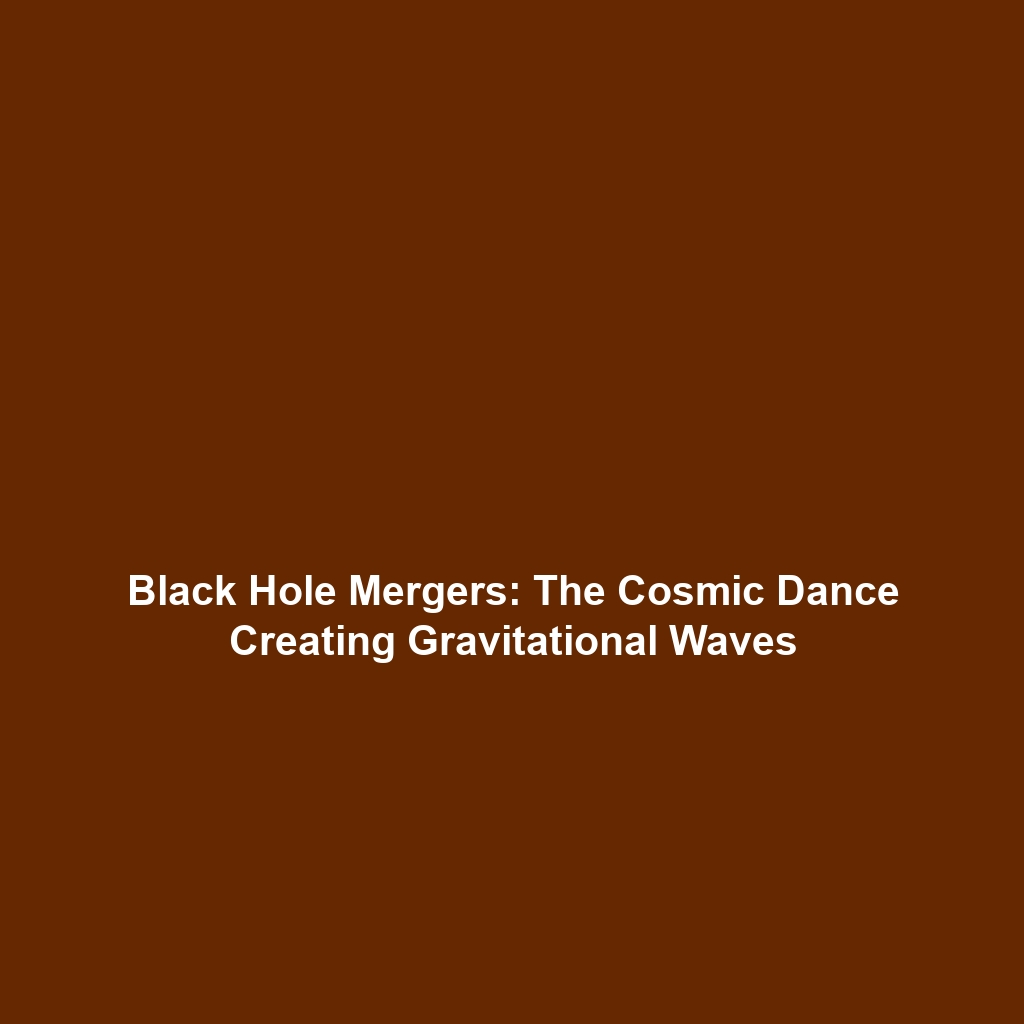Event Horizon: The Boundary Beyond Which Nothing Can Escape the Black Hole’s Gravity
Introduction
The Event Horizon represents a critical boundary in the context of black holes, beyond which no information or matter can escape the black hole’s immense gravitational pull. This threshold marks the point of no return for any object that ventures too close. Understanding event horizons is vital not only in theoretical astrophysics but also for broader implications regarding the nature of gravity, spacetime, and the ultimate fate of matter in the universe. This article delves into the intricacies of event horizons, their fundamental principles, applications, existing challenges, and future perspectives in the realm of black hole physics.
Key Concepts
Understanding Black Holes and Event Horizons
Black holes are regions in space where the gravitational pull is so strong that nothing, not even light, can escape from them. An event horizon is the boundary surrounding a black hole; it defines the limits of the influence exerted by the black hole’s gravity. The significant concepts related to event horizons include:
- Singularity: The core of a black hole where density becomes infinite.
- Escaping Velocity: The speed needed for an object to break free from the gravitational field.
- Schwarzschild Radius: The radius defining the event horizon of a non-rotating black hole.
Applications and Real-World Uses
The study of event horizons has profound implications across various scientific fields. The most significant applications include:
- Astrophysics: Enhancing our understanding of cosmic phenomena.
- Black Hole Imaging: Techniques used to visualize black holes rely on the principles of event horizons, exemplified by the Event Horizon Telescope project.
- Cosmology: Informing models that predict the universe’s structure and evolution.
These applications highlight how event horizons are instrumental in advancing knowledge within the category of black holes.
Current Challenges
Despite significant advancements, studying event horizons remains fraught with challenges:
- Distance: Many black holes are billions of light-years away, making them difficult to study directly.
- Data Interpretation: Analyzing data from black hole observations can be complex due to the extreme conditions involved.
- Theoretical Limitations: Existing models may not fully encapsulate the behaviors of matter near event horizons.
Outlining these challenges gives insight into the issues in black hole research.
Future Research and Innovations
Looking forward, research into event horizons is poised for significant breakthroughs. Areas of focus include:
- Quantum Gravity: Exploring the intersection of quantum mechanics and general relativity to understand black hole behavior.
- Advanced Imaging Techniques: Future advancements in technology may allow for clearer imaging of event horizons.
- Gravitational Waves: Further studies on the implications of black hole mergers and the insights they provide regarding event horizons.
These directions present exciting opportunities within the study of black holes and their respective event horizons.
Conclusion
In conclusion, the event horizon is a cornerstone concept in the study of black holes, fundamental to our understanding of gravity and the universe’s structure. As research progresses and technology evolves, we can anticipate new revelations that may one day allow us to peer even closer into these enigmatic cosmic features. For further reading, explore our articles on Black Hole Formation and Gravitational Waves to continue your journey into the fascinating world of astrophysics.






